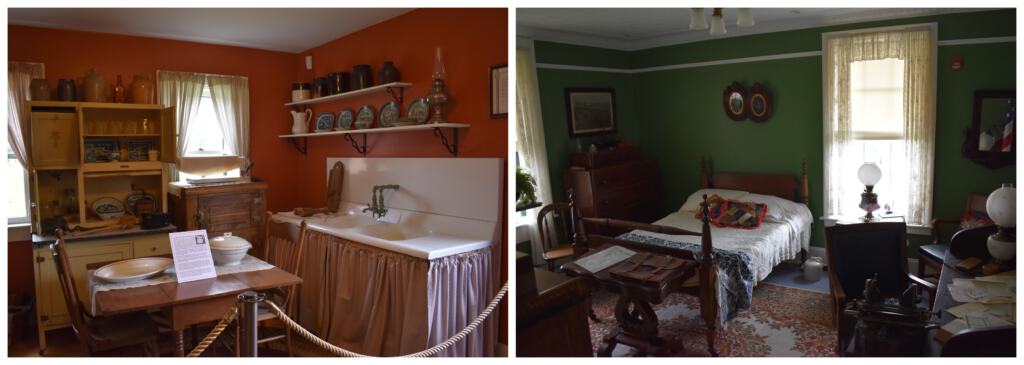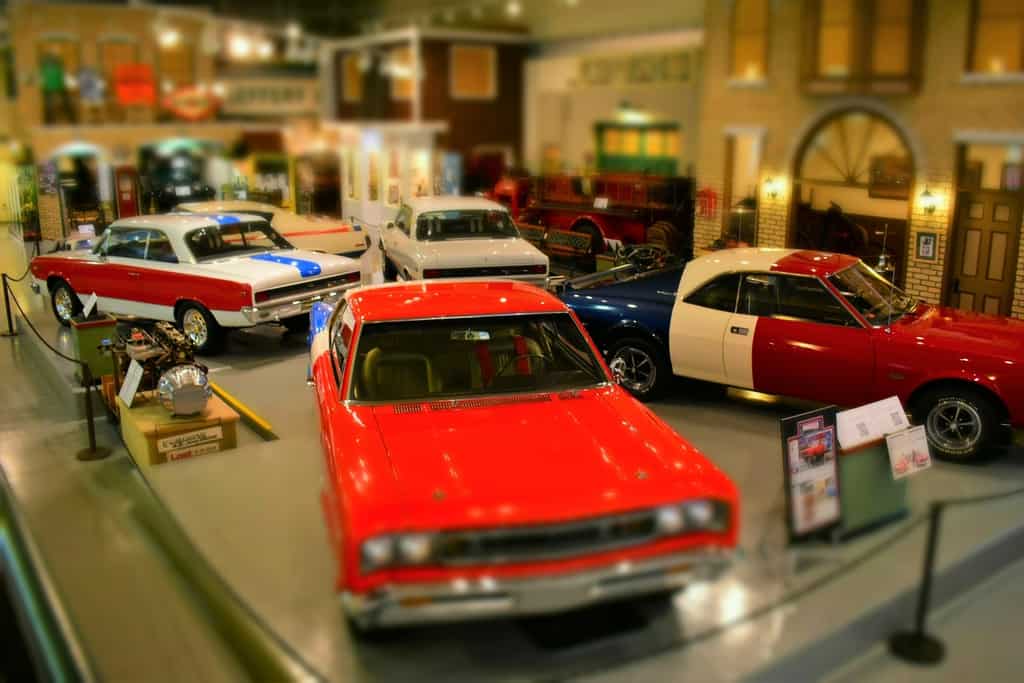Being from the Central Midwest, we don’t often see bodies of water as large as Lake Michigan. Our visit to Kenosha, Wisconsin landed us squarely on the coast of this Great Lake. The sight of lighthouses was a signal that we weren’t in Kansas anymore. Getting the chance to visit the Southport Light Station Museum, on Simmons Island, would shine a light on Kenosha Harbor. With a hearty lunch fueling our afternoon, we were ready to explore this historic structure.
We want to thank Visit Kenosha and the Kenosha History Center for their hospitality. Rest assured that all opinions are our own.

Early Days
The lands in this region were inhabited by Native Americans, who called it Kenozia. In the 1830s, the U.S. government opened the area for settlers, who began flocking to this lake shore region. The name was changed to Pike Creek when the first post office was established. As shipping increased on the lakes, this area became an important port. It would be renamed Southport in 1837. The name was changed again in 1850, when it became Kenosha. Inside the Southport Museum, we could read about how the area changed over time.

Shine a Light on Kenosha Harbor
Our tour guide was Chris Allen, Executive Director of the Kenosha History Center. He offered up tons of historical information about the city and the lighthouse. As he walked us through the various details associated with lighthouses, we were amazed to learn about this community’s link to this maritime necessity. The museum has examples of different lenses that are used for ship safety. As we made our way through the light keeper’s house, he taught us more and more about an area we had never studied. The earliest form of warning light was provided by a fire lit on top of a platform, which sat on a 10 foot tall stump.

The Reason for Lighthouses
On the second floor of the museum building, we came to an exhibit on shipwrecks in Lake Michigan. The information helped shine a light on Kenosha Harbor and the lake it hugs. Over the years, around 3,000 ships have sank in Lake Michigan. While all of the Great Lakes are dangerous, Lake Michigan is the deadliest. Running over 300 miles from north to south, the long, exposed shorelines allow for serious rip currents. Chris explained that the numerous wrecks are popular with divers. These days, salvage is no longer allowed, as the sites are protected.

Humble Living
The Southport Lighthouse was originally constructed in 1866, by the U.S. government. It was designed to be the first light that sailors heading north from Chicago would see. Back on the first floor, we made our way to the back half of the structure. This portion is dedicated to showing the living quarters for the lighthouse keeper. We can imagine life in these cozy quarters with its amazing view of the lake. Unfortunately, the lighthouse was built too far from the harbor to be effective. A new beacon was built further out on the pier in 1906, and the Southport Light Station was eventually retired.

Round and Round We Go
These days the structures are resigned to the purpose of educating the public about the importance of lighthouses. The 55 foot tall tower is open for visitors on the weekends and by special appointment. We made the climb up the 72 steps to the light platform at the top. During our climb, Chris told us about one of the light-keepers who had lost his right arm. The requirement of carrying a bucket of kerosene up the steps meant that he traveled without the ability of holding the handrail. It was surely a difficult trip, since the steps are steep and narrow. Once at the top, we enjoyed the views of Kenosha and the lake.

More to Explore
Back on ground level, we thanked Chris for his offer to shine a light on Kenosha Harbor. He had done an amazing job at explaining the importance of lighthouses. We paused for a selfie, as we listened to the gulls flying at the nearby shoreline. With a new found respect for these silent protectors, we were ready to go explore more of the vibrant downtown. Have you ever climbed up a lighthouse?






Thank you for your wonderful article of our gem on the lake or some say ocean.We are so grateful to have chris as our director.John O’Day chairman of History board
John, it was our honor to have a chance to tell the story of this wonderful historic site. Chris was a fantastic guide, as he imparted us with so many interesting facts. Wait until you see the article we do on the History Center.
Thank you! Born and raised there, it was nice seeing its beauty from a new view.
Thank you. We are always happy to hear from a local.